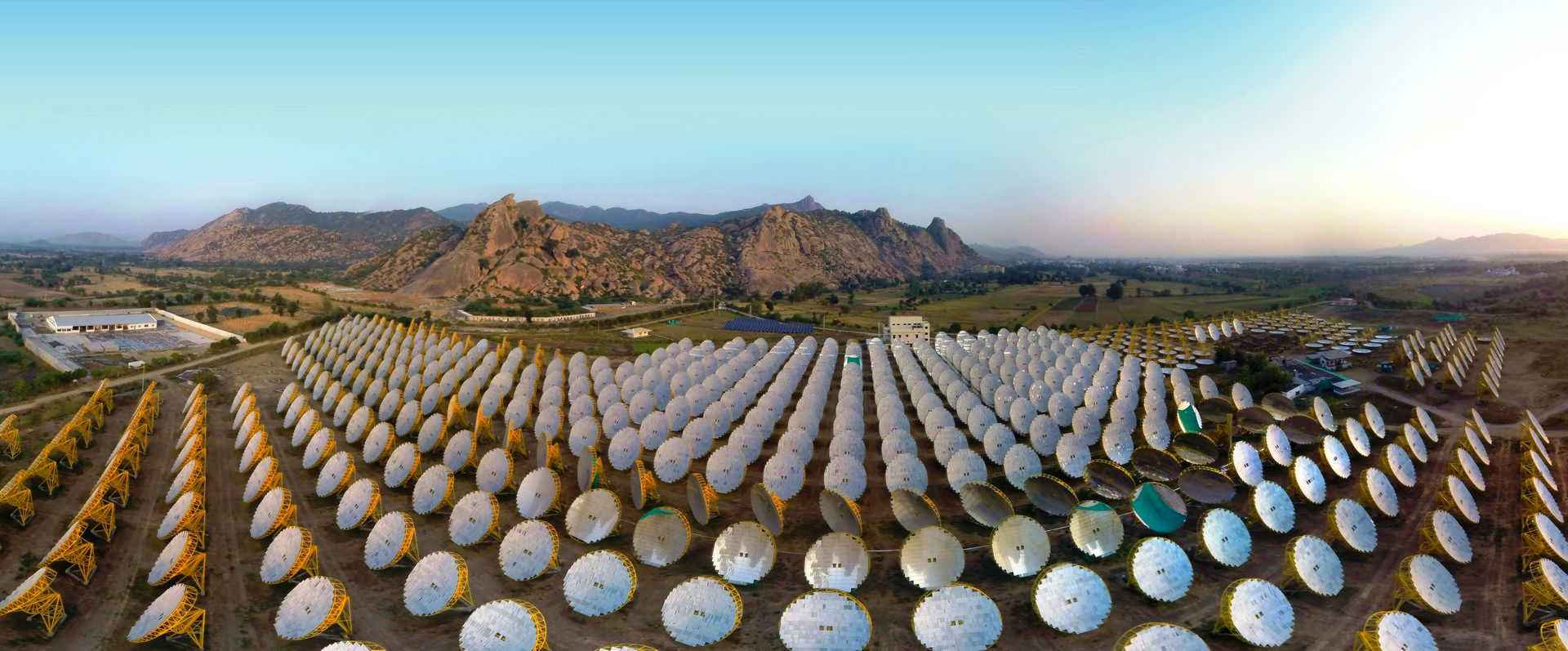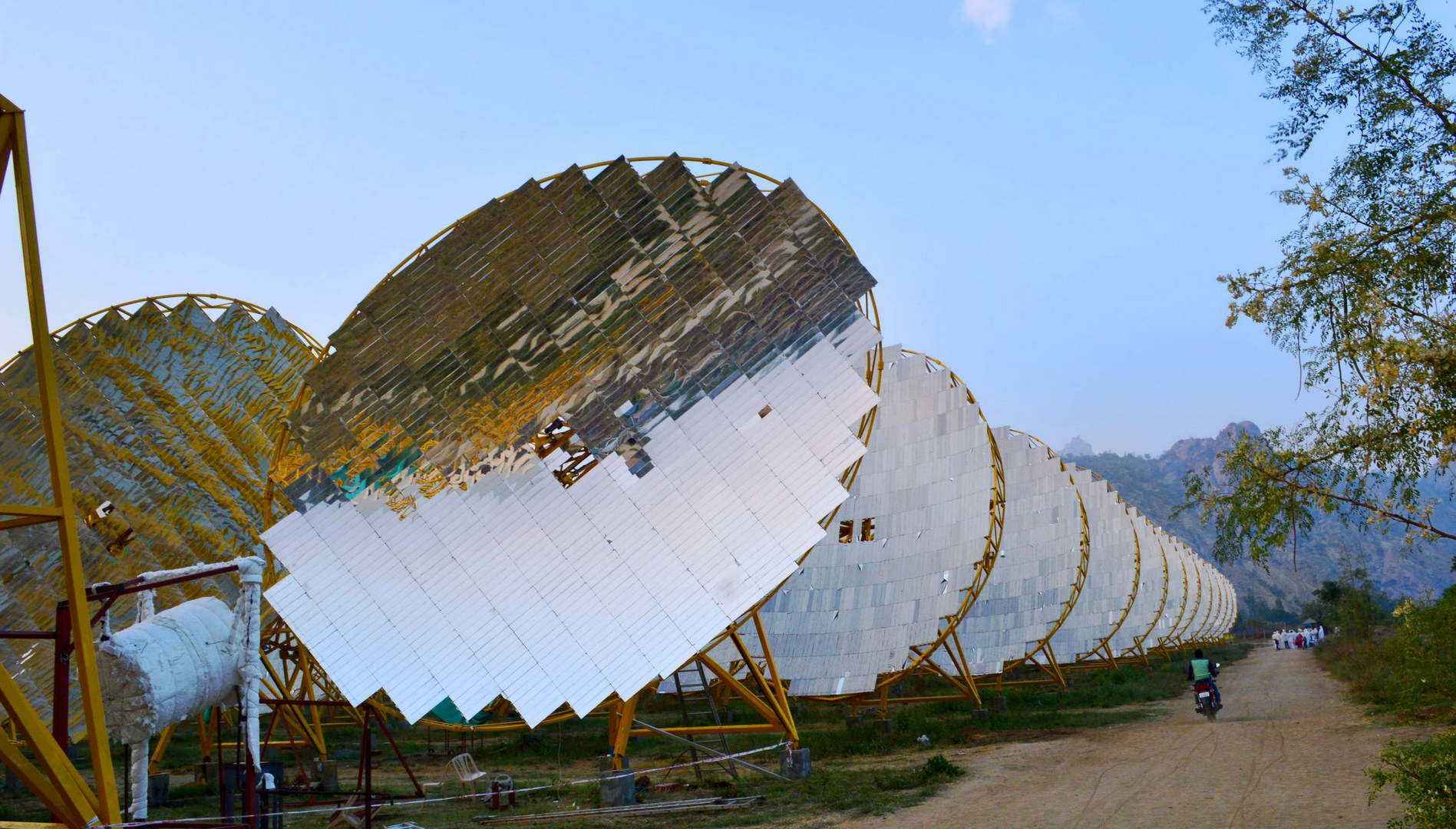The World’s Largest Solar Kitchen Cooks 50,000 Meals a Day in Rajasthan
Imagine cooking for 50,000 people without using a single drop of gas or electricity. Sounds impossible? It’s happening every day in Mount Abu, Rajasthan, where a solar kitchen is breaking records and showing the world what clean energy can really do.
Tucked high in the Aravalli Hills at the Shantivan Complex of the Brahma Kumaris, this massive setup uses the power of the sun to cook thousands of hot, nutritious, vegetarian meals — no firewood, no LPG, with almost no diesel.
It all starts with the sun
The kitchen runs on solar thermal energy, not solar panels. That means instead of converting sunlight into electricity, it uses mirrors to concentrate sunlight and generate heat, a lot of it.
The kitchen is powered by 84 Scheffler reflectors — these are giant oval-shaped mirrors, each with a surface area of 9.2 square metres. Their job? To track the sun and reflect its rays to a single focal point.
The reflectors are mounted on rotating frames that follow the sun all day. This movement helps them capture maximum solar energy, just like sunflowers do!
From sunlight to steam
Here’s where the magic happens.
When sunlight hits the reflector’s focal point, temperatures can shoot up to 800°C — that’s hot enough to melt lead! This intense heat is used to create steam, which is what powers the kitchen.
 The kitchen runs on solar thermal energy, not solar panels. That means instead of converting sunlight into electricity, it uses mirrors to concentrate sunlight and generate heat, a lot of it (Image courtesy: brahmakumaris.org).
The kitchen runs on solar thermal energy, not solar panels. That means instead of converting sunlight into electricity, it uses mirrors to concentrate sunlight and generate heat, a lot of it (Image courtesy: brahmakumaris.org).
Each reflector’s concentrated light is directed onto 42 specially designed steel receivers, which absorb the heat and convert water into steam — over 3,500 kilograms of steam every day!
How does the food get cooked?
The steam is collected through six insulated header pipes and sent into a central steam drum. From here, it’s distributed into huge cooking vessels inside the kitchen, where it is used to:
- Cook rice, lentils, curries, and more
- Sterilise water
- Prepare hot beverages
- Even wash and disinfect utensils
Everything is done in bulk, cleanly, and efficiently, using no fire and no emissions.
It’s smart, semi-automated & built to last
This isn’t just a patchwork of mirrors. The entire system is semi-automated. Every evening, a photovoltaic-powered motor and timer system resets the reflectors, so they’re ready to face the sun again the next day.
 Each reflector’s concentrated light is directed onto 42 specially designed steel receivers, which absorb the heat and convert water into steam — over 3,500 kilograms of steam every day(Image courtesy: brahmakumaris.org).
Each reflector’s concentrated light is directed onto 42 specially designed steel receivers, which absorb the heat and convert water into steam — over 3,500 kilograms of steam every day(Image courtesy: brahmakumaris.org).
There are also systems in place to ensure smooth operations:
- A water-softening unit to avoid mineral buildup
- A pressure reducer to keep the steam flow consistent
- And a diesel backup system (only used during the monsoon)
Even during cloudy days and rain, the kitchen doesn’t stop. That backup diesel setup keeps meals flowing, making it reliable year-round.
From 20,000 to 50,000 meals a day
When this system was first fully commissioned in 1998, it was designed to cook 20,000 meals a day. But it quickly outperformed expectations.
By expanding the infrastructure, improving efficiency, and adding more modules, the kitchen now serves up to 50,000 people daily — a mix of residents, volunteers, guests, and students.
That’s the equivalent of feeding an entire stadium every single day with sunlight!
Why this solar kitchen matters
What began in 1992 as a small experiment is now an international model for clean, large-scale cooking. It’s been backed by the Ministry of New and Renewable Energy (MNES) and even featured by BBC World Service as the largest solar kitchen in the world.
Most importantly, this kitchen saves:
- 1.18 lakh litres of diesel every year
- Tons of carbon emissions
- Lakhs in fuel costs and sets a powerful example for climate-friendly community kitchens.
A university spokesperson summed it up best: “This is a model for the world — sustainable, clean, efficient, and deeply rooted in Indian innovation.”
News